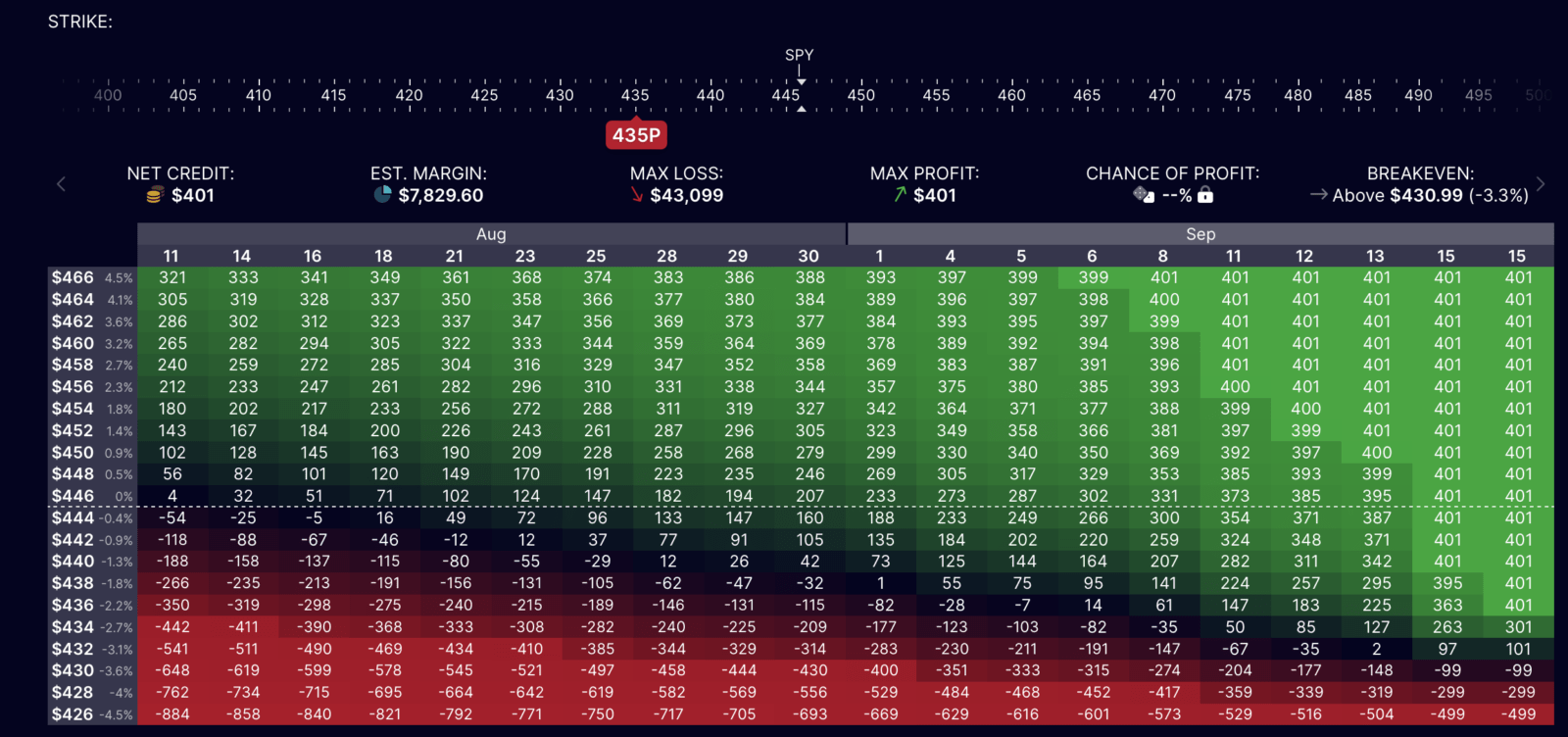Intro: The short put strategy is a bullish options approach characterized by unlimited risk and limited profit potential. It involves selling a put option, which can be seen as a leveraged alternative to purchasing stocks. However, it’s essential to note that this strategy comes with no risk protection in case the stock’s direction turns unfavorable.
Overview: A short put entails selling a put option contract, which is considered “naked” due to the absence of risk mitigation if the stock moves adversely. Each short put contract is equivalent to holding 100 shares of the underlying stock. These positions are typically cash-secured, requiring the option writer to have enough capital to cover the cost of 100 shares if the stock is assigned.
Market Outlook: A short put is executed when the seller anticipates the underlying asset’s price to exceed the strike price by the expiration date or expects a decrease in implied volatility. The proximity of the strike price to the stock’s price determines the credit received. This strategy can also serve as a means to initiate a long position in the underlying stock, lowering the cost basis if the put is eventually assigned.
Setting Up a Short Put: A short put position is established by writing a put option contract, listed in the options chain along with relevant details like bid and ask prices. The credit received upon trade entry is referred to as the premium. Evaluating the option premium involves considering factors such as the strike price in relation to the stock price, time until expiration, and volatility.
Payoff Diagram: The payoff diagram for a short put reveals the inherent risk associated with selling naked options. Profit potential is capped at the premium received upon selling the put. Conversely, the risk remains undefined until the stock’s value reaches zero.

Entering and Exiting a Short Put: To initiate a short put position, a sell-to-open (STO) order is sent to the broker. Exiting the position can occur through a buy-to-close (BTC) order before expiration. Additionally, the buyer of a long put contract can exercise the option, obligating the seller to buy 100 shares at the strike price. If the short put is in-the-money (ITM) at expiration, it’s automatically assigned; if out-of-the-money (OTM), it expires worthless.
Time Decay and Implied Volatility Impact: Time decay (theta) and implied volatility influence an option’s extrinsic value and premium. Options with more time until expiration command higher prices due to potential price movement. As time passes, option prices decrease. Higher implied volatility elevates option prices, reflecting anticipated future price fluctuations. Options sellers benefit from reduced implied volatility.
Adjustments and Strategies: Short put positions can be managed through adjustments. For instance, converting a challenged position into a bull put credit spread by purchasing a put option at a lower strike price. Rolling out a short put to a later expiration date can also be executed to extend the trade. Hedging involves selling a call with the same strike and expiration, creating a short straddle.
Synthetic Short Put: A synthetic short put combines long stock with a short call option at the original stock position’s strike price. This resembles a single short put option’s payoff diagram. Although the call’s sale collects a premium, the risk remains unlimited beyond the premium received.
Conclusion: The short put strategy involves selling put options with the anticipation of the underlying asset’s price exceeding the strike price. While offering limited profit potential, this approach requires careful risk management due to its undefined risk nature. Traders should consider market conditions, time decay, and implied volatility before implementing the short put strategy.



